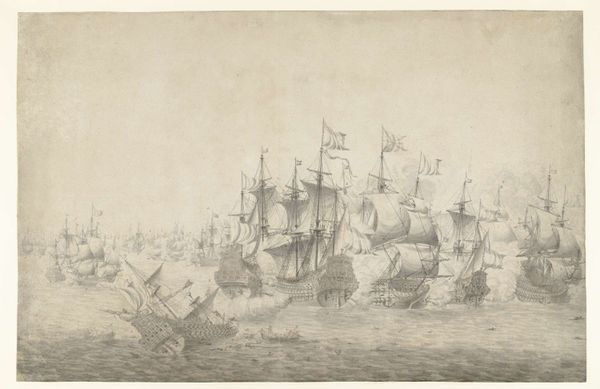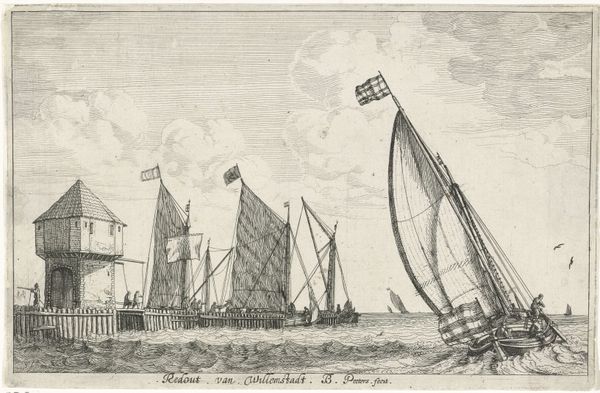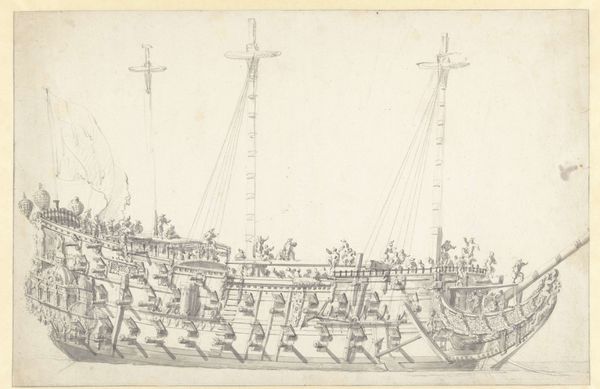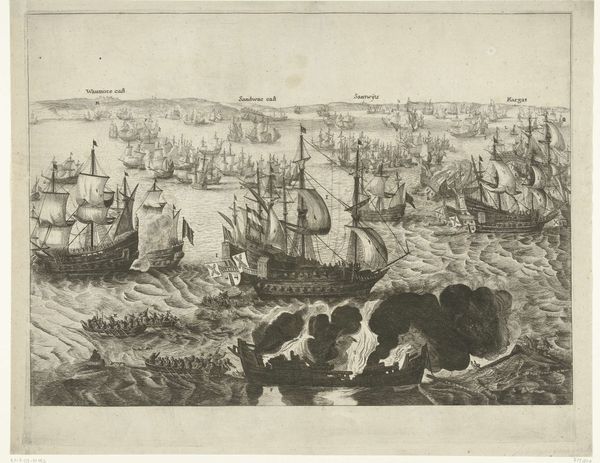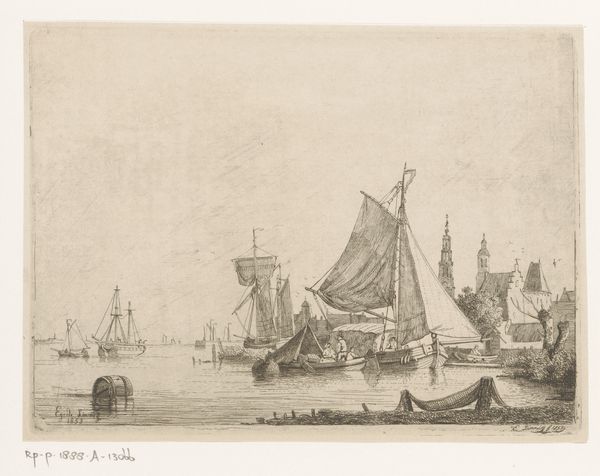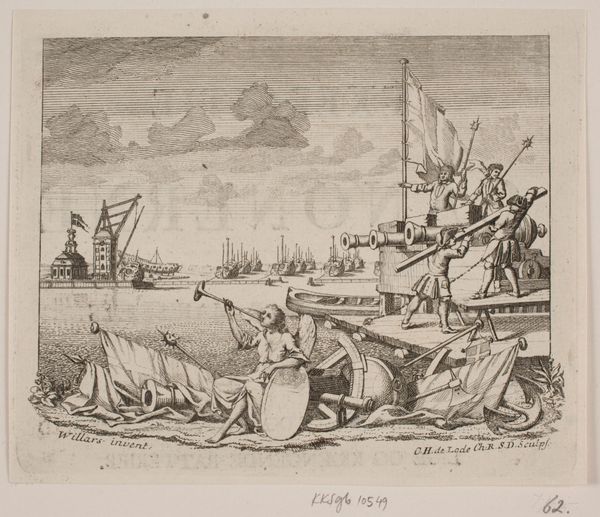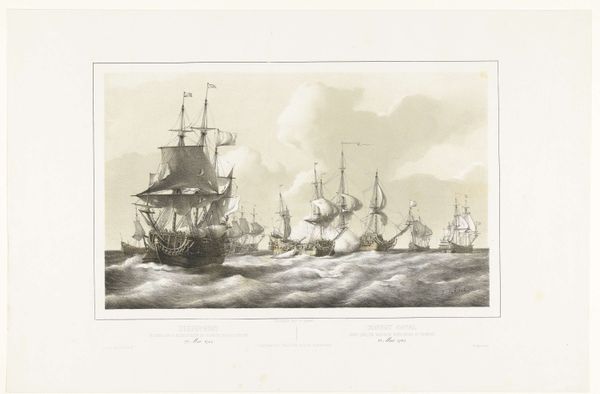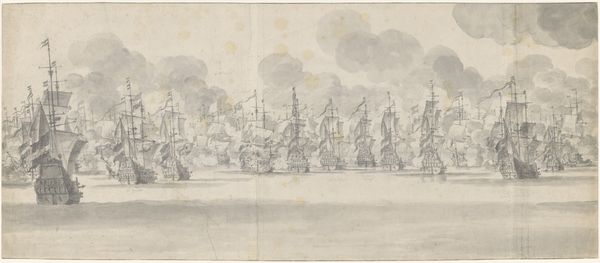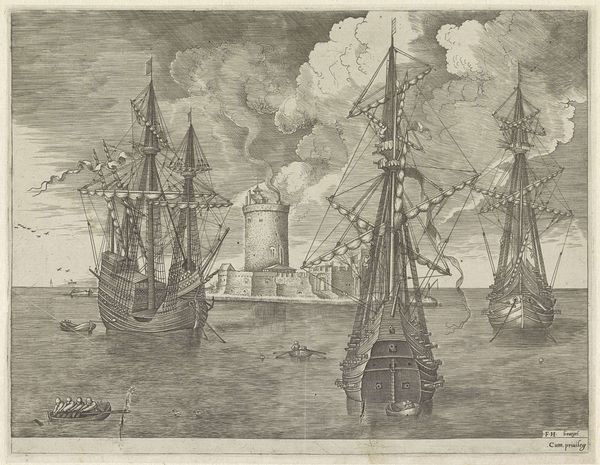
drawing, ink, pencil, pen
#
drawing
#
dutch-golden-age
#
pencil sketch
#
landscape
#
ink
#
pen-ink sketch
#
pencil
#
sketchbook drawing
#
pen
Dimensions: height 423 mm, width 443 mm
Copyright: Rijks Museum: Open Domain
Curator: This drawing, crafted with pen, pencil, and ink, captures the “Zeeslag bij Terheide, 10 augustus 1653,” or the Battle of Terheide on August 10th, 1653, by Willem van de Velde the Elder. Editor: My first thought is how delicate, yet powerful this work feels. The subtle use of varying greys manages to give real dynamism to a scene that would've been quite chaotic and violent. Curator: Absolutely, and it’s essential to consider van de Velde's unique position. He often sketched from a small boat amidst these very battles. We can imagine the material challenges he faced, trying to render such immense events onto paper while at sea. His labor reflects not just artistic skill, but physical endurance and access. Editor: Exactly. Understanding the socio-political climate is key. The Anglo-Dutch Wars were heavily influenced by mercantilist competition and control over trade routes. This wasn’t just about territory; it was about economic power, and images like these, commissioned no doubt, served to document and potentially glorify Dutch naval prowess. Where would this drawing have been displayed, who would have been looking at it and why? Curator: Precisely. Think about the accessibility of these images. Unlike large-scale oil paintings, drawings could be more easily disseminated. The means of production affect who gets to engage with this art and where. What impact did this have in shaping the Dutch national identity? Editor: And how does it connect to Dutch art more broadly? The Dutch Golden Age was driven by a growing middle class and new patronage networks. Artists had more creative control over subjects than they had enjoyed earlier, because they did not depend entirely on the wealthy upper classes, but they are also capturing images of very violent episodes. Curator: True, this era marks a turning point. Thinking about what this meant for naval draftsmen—the increased demand created new opportunities but also potentially exploited them as part of broader socio-economic dynamics. Editor: This is a vital glimpse into the forces shaping Dutch society at the time. From trade and class relations to naval production and technological advancement, this image encapsulates a period of intense ambition. Curator: Seeing through a materialist lens highlights labor and consumption, underscoring the real, human effort and expense required to produce even an image. It's all very well capturing history on paper, but somebody needed to make the paper. Editor: By examining its context within wider artistic trends and geopolitical developments, we hopefully get a little closer to a richer understanding of the artist and his audience.
Comments
No comments
Be the first to comment and join the conversation on the ultimate creative platform.

